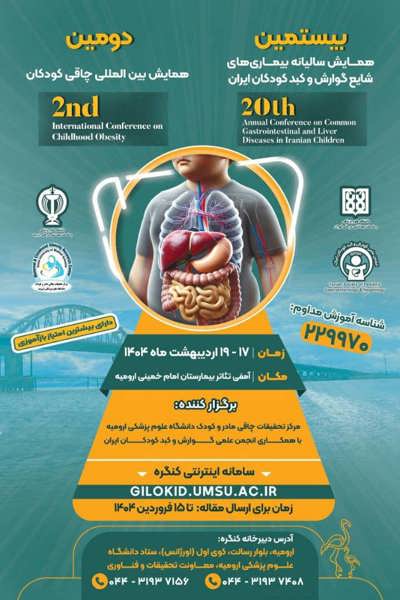0% Complete

صفحه اصلی
/
بیستمین همایش سالیانه بیماری های شایع گوارش و کبد کودکان ایران و دومین همایش بین المللی چاقی کودکان
نویسندگان :
کلمات کلیدی :
چکیده :
لیست مقالات بایگانی شده
Nastaran Vakilbashi - Golnaz Khodayari - Faezeh Ghalichi
Sanaz Bohlouli Sardroudi - Zahra Firoozi - Sara Arefhosseini - Mehrangiz Ebrahimi-Mameghani
Negar Moosaee Farahani - Sajjad Moradi - Sadra Khodaei
Mahsa Mahmoudinezhad - Vali Musazadeh - Mohammad Alizadeh - Amir Hossein Faghfouri
Amin Mokari-Yamchi - Amir Hossein Faghfouri - Shahsanam Gheibi
Aylin Ebrahimpour - Laleh Payahoo - Yaser Khajebishak
Sahel Sharifpoor Saleh - Elahe Gozali - Bita Almasi
Zohreh Dehghan Harati - Fatemeh Dehghan Harati
Aylin Ebrahimpour - Faezeh Ghalichi - Negar Moosaee Farahani
Nazanin Mozaffari - Mohsen Maleki

